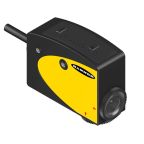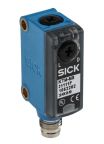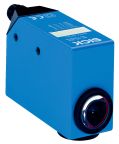Registration Sensors
Registration sensors, sometimes referred to as contrast sensors, are sensors designed to detect the differentials of either light intensity, colour or some other contrast factor. As such they are considered vital when ensuring consistency or triggering machine processes in automated manufacturing. For example, an automated cutter might be triggered to cut at the detection of certain colour change in the material that is being cut.
The sensors are usually programmable to the user's requirements, often with the ability to set specific registration marks, and can be optimised for high-speed industrial production applications. Wherever precisely triggered actions are needed to respond to set parameters, registration sensors are usually an integral part of the control system.
What is the difference between colour sensors and contrast sensors?
Able to respond to the difference in the consistency of a material surface, contrast sensors can usually be programmed with an easy to use 'teach' function that allows the sensor to recognise both the mark and the background. As they are generally lightweight and easy to use, they are employed in a variety of mass production applications. Colour sensors essentially fulfil the same purpose as contrast sensors and in much the same way, except they are designed to recognise a specific colour, which may make them more suitable for tasks where the material being sensed has a distinctive colour markings.
What are light intensity sensors?
Light intensity sensors, or luminescence sensors, are designed to detect differences in the levels of light on a surface. While they can be used in much the same way as colour or contrast sensors, they are not able to specifically detect a certain colour or contrast in colour, but differences in light levels. As such, they are suited to more specialist environments and materials.



















